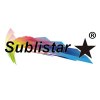Why is the DTF Printer active on the market? There are numerous machines available that can print T-shirts. Screen printing machines rolling machines, large-scale printers. There are also small digital direct-injection printers, offset heat transfer, as well as powder shaking machines. These are very popular in the marketplace. Everyone is well-known.
I think that, after having read the introduction most readers have a general idea in their head. What is your primary area of business and what is your market’s direction? We will introduce you to different methods of printing T-shirts. And compare the differences and advantages of these types of printing. You will gain a greater understanding of the latest market choices.
What is a DTF Printer?
DTF printers are also called digital offset heat transfers and powder shaking machines. The name derives from the real-world effect of offset print in color. The pattern is so precise and precise that it could even surpass the quality of the photograph. A lot of people refer to it as offset heat transfer in Kodak photos. It’s also referred to as DTF Printer. It’s the smallest family-friendly printer we have today.
DTF printers use hot melt to print onto PET transfer film. This powder is produced professionally and used in this machine. This machine operates by ensuring that the slagging agent for printing material gets into the fabric and produces hot melt. Then it falls off the fabric and forms bonds. It is required to employ two printing methods offset printing and ink printing. It is impossible to produce similar products without the integration of both technologies.
DTF printer uses a four-color ink set that is made of low-temperature gel which is very soft and breathable. It also features vibrant colors and vivid effects. It’s stretch-resistant and has a great recovery effect.
DTF printers are usually employed by self-employed people. They can also be a larger operator. Or it may be a distributor with agency rights. DTF printers are ideally suited for transferring all types of sportswear, clothing small items, etc. PET film. For instance: T-shirts that are customized, sweaters, hats, Aprons, and more. Swimwear and sportswear, cycling and baseball uniforms; various small commodities, mugs, mouse pads, souvenirs, etc.
T-shirts are the most favored. There are numerous different types of T-shirts available. Cotton T-shirts, polyester T-shirts, Lycra T-shirts, chiffon T-shirts, etc. Each T-shirt is made of an individual type of material. If you want to design your own designs and patterns on the shirt. Different types of printers may be hard to implement. Our DTF printer can be made from any kind of material, whether your T-shirt is pure cotton or any other material and whether it’s white, black, or color, can be printed. The printed merchandise can be washed, it is flexible, breathable, and colorfast, and has a high quality of comfort. It’s especially suitable for the hot summer.
What is the main difference between DTF and other printers?
In the article before, the emphasis was primarily on the quantity of T-shirts printed. If the T-shirts are printed in massive quantities, it is possible to get large orders from major T-shirt retailers. Screen printing is a fairly low price. Because of the low printing cost of screen printing, it is printed as plate making, which requires the cost of making plates which is ideal for mass production.
Screen printing employs an ink-color printing process that makes it difficult for screen printing to accurately reflect color changes within the image. Screen printing is not the most efficient option when you are looking to print complicated patterns with a high degree of precision. Speed and efficiency are high. There are significant coloring restrictions, as well as pollution.
It is possible to use DTF or DTG printers if you want to create personalized T-shirts but only have a small quantity. There is no limit on the color, which is more random. Flexible, allowing for better adaptability to changes in the market. Hot melt powders and inks that are used comply with environmental protection standards. This makes them more eco-friendly. This is in complete accordance with the current requirements of international markets.
DTG printers do not require to creation a plate and print directly the pattern on the cotton fabric. The printing effect. What you see is what you get. In actual operation, however, it is important to note that if you print using a dark-colored color, it’s necessary to spray pretreatment liquid before. The result of printing will be affected if pretreatment fluid is not properly handled.
Thermal transfer is a new method of processing that utilizes equipment for thermal transfer to transfer patterns and images printed on thermal transfer paper to fabrics through high temperatures and pressure. The method of dye sublimation is utilized predominantly with chemical fibers. When the heat transfer occurs to the fabric the ink is directly sublimated into the fiber of the fabric, and the color is clear and rapid. Get the full effect of graphic printing by using transitional color and rich layering.
The use of heat transfer printing to control production is perfect for large-scale enterprises. The first thing to consider is the price tag of thermal transfer equipment discourages many who wish to venture into the field. Its unique features are what make it a must-have in the marketplace. For a long time, it’s had a major influence on the way we live.
Have you been inspired by this post? Are you planning to join the workforce or wish to know more about DTF printing machines? Welcome to contact us if you are interested.
